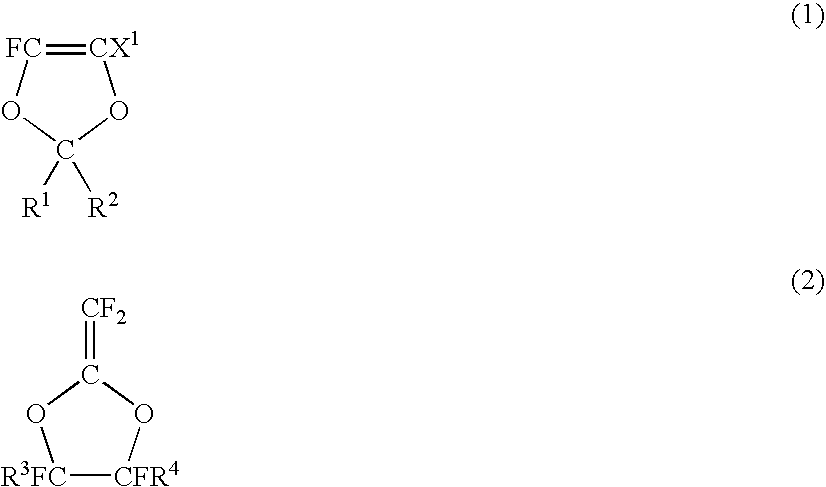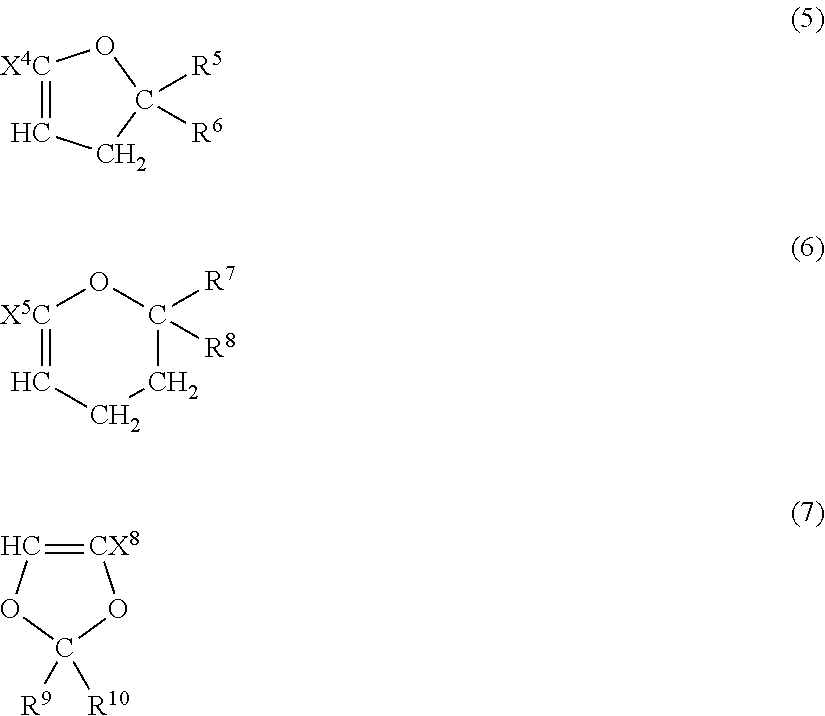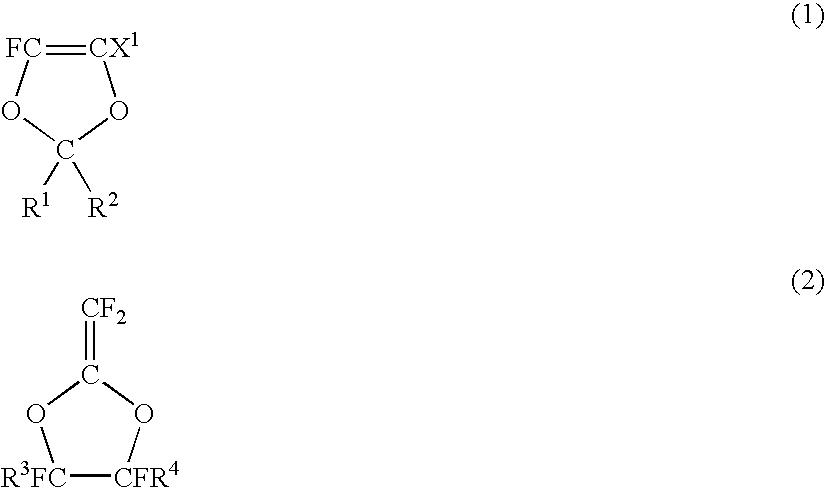Fluoropolymer for chromatic aberration-free lens and chromatic aberration-free lens
a technology of aberration-free and fluoropolymer, which is applied in the field of fluoropolymer for chromatic aberration-free lenses and chromatic aberration-free lenses, can solve the problems of low impact resistance of lenses made of such difficult to mold and difficult to process specific low dispersion glass into a complex form. , to achieve the effect of large abbe number, large relative partial dispersion, large anomal
- Summary
- Abstract
- Description
- Claims
- Application Information
AI Technical Summary
Benefits of technology
Problems solved by technology
Method used
Image
Examples
preparation example 1
[0092]Into a pressure resistant reactor (internal volume: 30 mL, made of glass), 4.0 g of perfluoro(2-methylene-4-methyl-1,3-dioxolane (the above compound (2-2)), 15 mg of (CF3CF2CF2COO—)2 as a polymerization initiator and 35.9 g of 1H-perfluorohexane as a polymerization solvent were added. Then, the interior of the pressure resistant reactor was replaced with nitrogen gas, and the mixture was then heated to 30° C. to carry out polymerization for 18 hours. As a result, 3.9 g of a polymer (hereinafter, referred to as “polymer (A1)”) was obtained.
[0093]The infrared absorption spectrum of this polymer was measured, and it was confirmed that the absorption attributable to a double bond of a monomer disappeared.
preparation example 2
[0094]Into a pressure resistant reactor (internal volume: 30 mL, made of glass), 3.8 g of 1,1,2,4,4,5,5-heptafluoro-3-oxa-1,6-heptadiene (the above compound (4-1)), 7.5 mg of (CF3CF2CF2COO—)2 as a polymerization initiator and 24.6 g of Fluorinert FC-77 (trade name, manufactured by Sumitomo 3M Limited) as a polymerization solvent were added. Then, the interior of the pressure resistant reactor was replaced with nitrogen gas, and the mixture was cooled to 20° C. to carry out polymerization for 25 hours. As a result, 3.8 g of a polymer (hereinafter, referred to as “polymer (A2)”) was obtained.
[0095]The infrared absorption spectrum of this polymer was measured, and it was confirmed that absorption attributable to a double bond of a monomer disappeared.
preparation example 3
[0096]Into a pressure resistant reactor (internal volume: 200 mL, made of stainless steel), 6.7 g of dihydrofuran, 1.7 g of a 50 mass % xylene solution of PERBUTYL PV (trade name, manufactured by NOF CORPORATION) as a polymerization initiator and 150 g of CCl2FCClF2 as a polymerization solvent were added. Then, the interior of the pressure resistant reactor was evacuated, and 22.4 g of tetrafluoro ethylene was added. Then, the mixture was heated to 55° C. to carry out polymerization for 3.5 hours. As a result, 7.9 g of a polymer (hereinafter, referred to as “polymer (A3)”) was obtained.
[0097]The infrared absorption spectrum of this polymer was measured, and it was confirmed that the absorption attributable to a double bond of a monomer disappeared. The quantitative analysis was carried out by means of 19F-NMR and 1H-NMR, and the composition ratio of dihydrofuran to tetrafluoroethylene was 49:51 (molar ratio).
PUM
| Property | Measurement | Unit |
|---|---|---|
| Abbe number | aaaaa | aaaaa |
| pressure | aaaaa | aaaaa |
| pressure | aaaaa | aaaaa |
Abstract
Description
Claims
Application Information
 Login to View More
Login to View More - R&D
- Intellectual Property
- Life Sciences
- Materials
- Tech Scout
- Unparalleled Data Quality
- Higher Quality Content
- 60% Fewer Hallucinations
Browse by: Latest US Patents, China's latest patents, Technical Efficacy Thesaurus, Application Domain, Technology Topic, Popular Technical Reports.
© 2025 PatSnap. All rights reserved.Legal|Privacy policy|Modern Slavery Act Transparency Statement|Sitemap|About US| Contact US: help@patsnap.com



